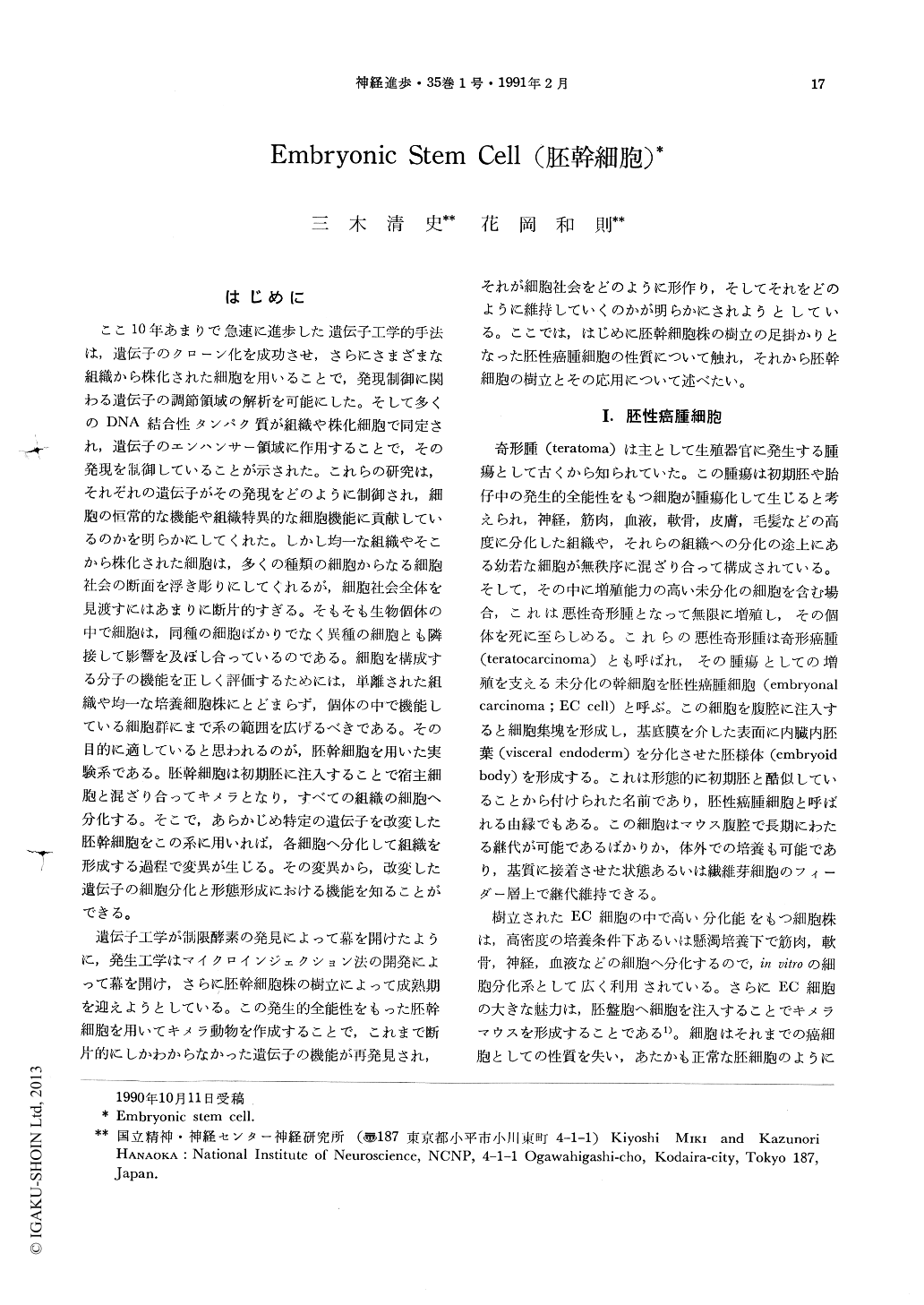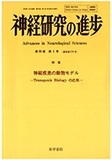Japanese
English
- 有料閲覧
- Abstract 文献概要
- 1ページ目 Look Inside
はじめに
ここ10年あまりで急速に進歩した遺伝子工学的手法は,遺伝子のクローン化を成功させ,さらにさまざまな組織から株化された細胞を用いることで,発現制御に関わる遺伝子の調節領域の解析を可能にした。そして多くのDNA結合性タンパク質が組織や株化細胞で同定され,遺伝子のエンハンサー領域に作用することで,その発現を制御していることが示された。これらの研究は,それぞれの遺伝子がその発現をどのように制御され,細胞の恒常的な機能や組織特異的な細胞機能に貢献しているのかを明らかにしてくれた。しかし均一な組織やそこから株化された細胞は,多くの種類の細胞からなる細胞社会の断面を浮き彫りにしてくれるが,細胞社会全体を見渡すにはあまりに断片的すぎる。そもそも生物個体の中で細胞は,同種の細胞ばかりでなく異種の細胞とも隣接して影響を及ぼし合っているのである。細胞を構成する分子の機能を正しく評価するためには,単離された組織や均一な培養細胞株にとどまらず,個体の中で機能している細胞群にまで系の範囲を広げるべきである。その目的に適していると思われるのが,胚幹細胞を用いた実験系である。胚幹細胞は初期胚に注入することで宿主細胞と混ざり合ってキメラとなり,すべての組織の細胞へ分化する。そこで,あらかじめ特定の遺伝子を改変した胚幹細胞をこの系に用いれば,各細胞へ分化して組織を形成する過程で変異が生じる。その変異から,改変した遺伝子の細胞分化と形態形成における機能を知ることができる。
遺伝子工学が制限酵素の発見によって幕を開けたように,発生工学はマイクロインジェクション法の開発によって幕を開げ.さらに胚幹細胞株の樹立によって成熟期を迎えようとしている。この発生的全能性をもった胚幹細胞を用いてキメラ動物を作成することで,これまで断片的にしかわからなかった遺伝子の機能が再発見され,それが細胞社会をどのように形作り,そしてそれをどのように維持していくのかが明らかにされようとしている。ここでは,はじめに胚幹細胞株の樹立の足掛かりとなった胚性癌腫細胞の性質について触れ,それから胚幹細胞の樹立とその応用について述べたい。
Pluripotent embryonic stem (ES) cells established from normal mouse embryos provide promising experimental system to analyze the function of genes underlying the development of mammals and produce model animals for the hereditary human disease.
ES cells continue to grow as undifferentiated stem cells so far as they are cultured on feeder cells of mitomycin C treated STO fibroblasts. Altering the growth environment of the cell, for example, culti-vating the cell in suspension on bacteriological petri dishes or transplanting the cell into an adult syngeneic mouse subcutaneously forces the cell to differentiate into a variety of cell types in vitro or in vivo. When the ES cells are microinjected into host blastocysts and subsequently incubated in a foster mother, they fully exhibit their developmental potency and differentiate into virtually all cell types in adult chimeras, and in some individuals they form functional gametes. This remarkable feature of ES cells allow them to serve as vehicles for manipulating mouse genomes: ES cells are subjected to intro-duction of a cloned gene in vitro, and then successfully mutated ES cells are selected, and finally chimeric mice are produced using the transformed cells.

Copyright © 1991, Igaku-Shoin Ltd. All rights reserved.


